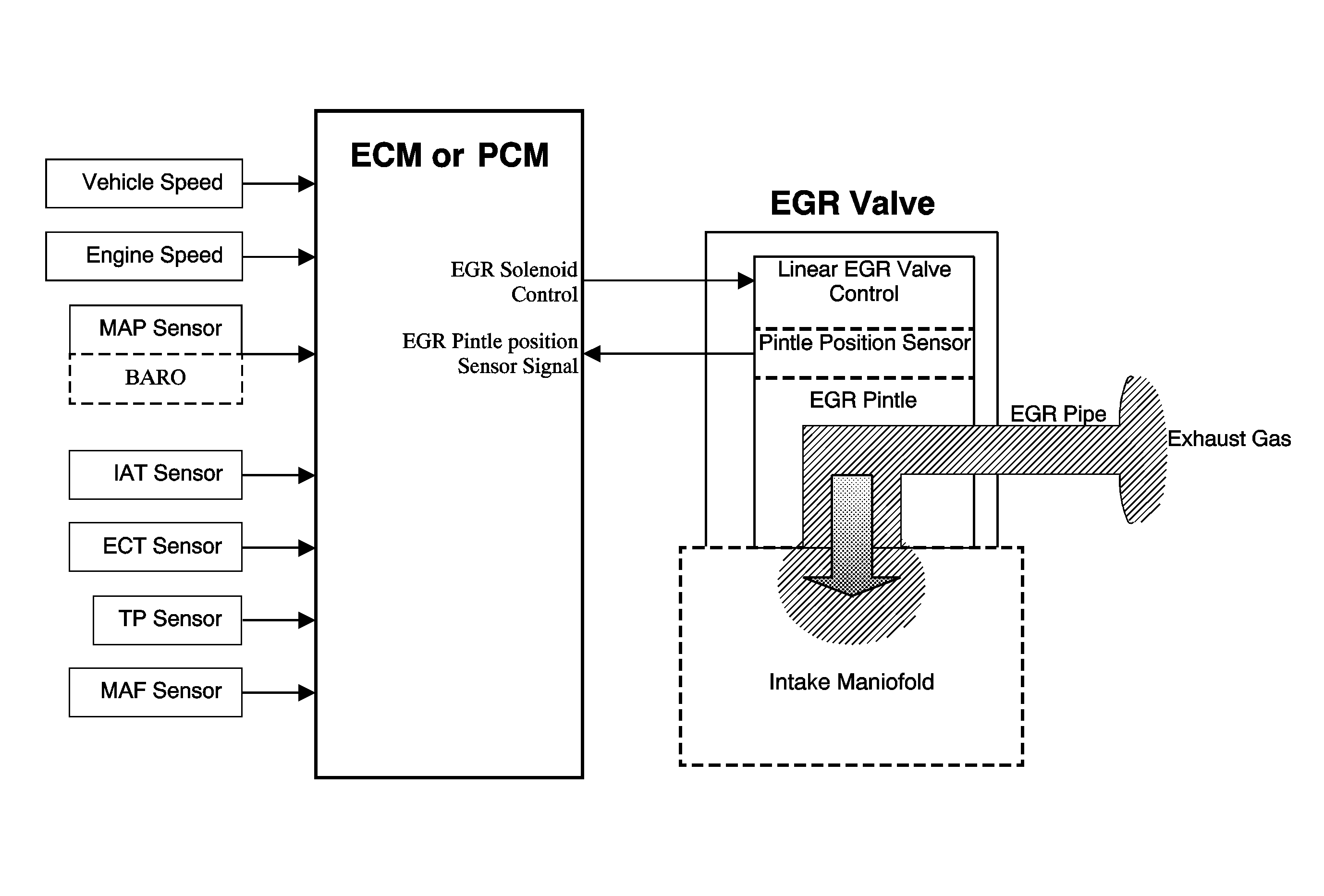
The exhaust gas recirculation (EGR) system is used to reduce the amount of nitrogen oxide (NOx) emission levels caused by combustion temperatures exceeding 816°C (1,500°F). It does this by introducing small amounts of exhaust gas back into the combustion chamber. The exhaust gas absorbs a portion of the thermal energy produced by the combustion process and decreases the combustion temperature. The EGR system will only operate under specific temperature, barometric pressure (BARO) and engine load conditions in order to prevent drivability concerns and to increase engine performance.
EGR System
The EGR valve is controlled by a high side driver within the control module (ECM or PCM). The high side driver uses a 12-volt pulse width modulated (PWM) signal. The ground path for the EGR valve is completed by turning on a separate driver within the ECM or PCM.
The control module tests the EGR flow during deceleration by momentarily commanding the EGR valve to open while monitoring the signal of the manifold absolute pressure (MAP) sensor. When the EGR valve is opened, the control module will expect to see a predetermined increase in MAP. If the expected increase in MAP is not detected, the control module records the amount of MAP difference that was detected and adjusts a calibrated fail counter towards a calibrated fail threshold level. When the fail counter exceeds the fail threshold level, the control module will set a DTC.
Normally, the control module will only allow one EGR Flow Test Count during an ignition cycle. To aid in verifying a repair, the control module allows up to 18 EGR Flow Test Counts during the first ignition cycle following a code clear or a battery disconnect event. The control module monitors the position of the EGR valve pintle using the EGR pintle position sensor. The control module detects the variance between the desired EGR position and the actual EGR position
